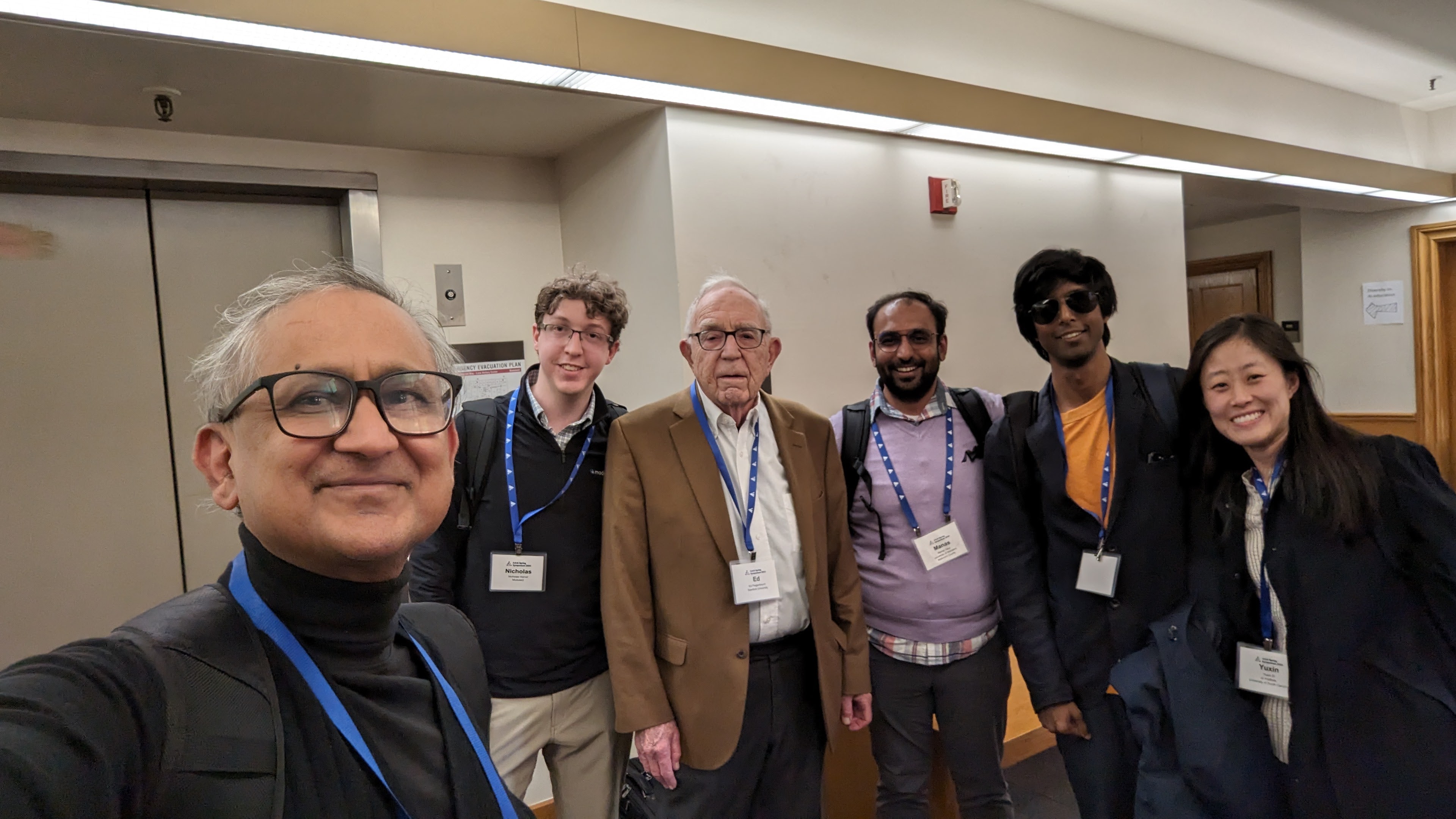Research News
Dr. Sur Receives NSF Research Award
Dr Sanjib Sur has received a National Science Foundation (NSF) research award for his project titled "Modernizing Underground Mines Operations with Millimeter-Wave Imaging and Networking". You can learn more about his research here and in the article Improving underground mining safety with millimeter wave technology.
"The project aims to address the unique challenges of sensing and networking in underground mining environments by employing millimeter-wave (mmWave) wireless, a core technology for 5G and beyond standards. This technology is particularly suited for the harsh conditions of underground mines, such as dust and low light or dark conditions. However, the adoption of mmWave technology in mining is challenging due to reconstructing high-quality 3D maps in complex structures, fusing static and mobile underground real-time maps, and deploying mmWave communication infrastructures. By overcoming these challenges, this project seeks to enhance safety in mining operations, improve operational efficiency through better resource management, navigation, and machinery positioning, and contribute to the national interest by advancing the future of autonomous mining systems."
Dr. Jamshidi Receives Most Influential Paper Award at SEAMS
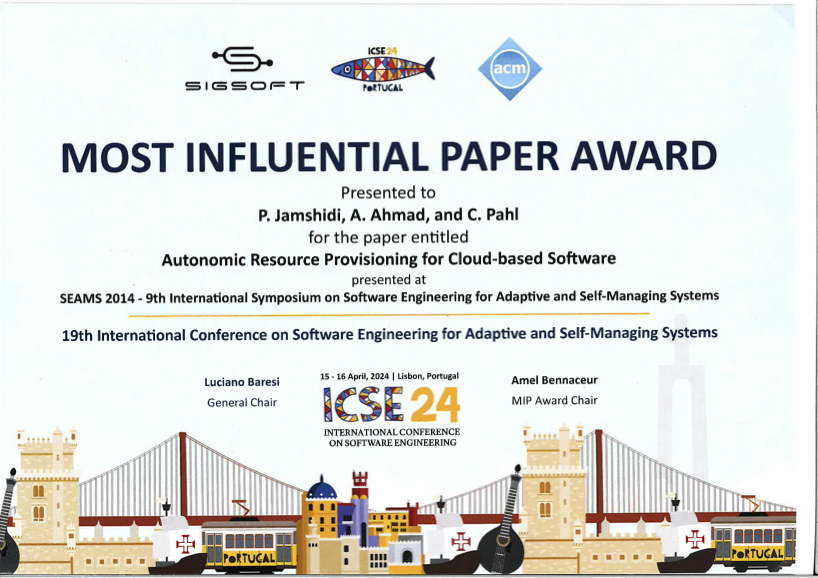 We are happy to announce that Dr. Jamshidi, A. Ahmad, and C. Pahl were recipients of a Most Influental Paper Award at the 9th International Symposium of Software Engineering for Adaptive and Self-Managing Systems for their paper "Autonomic Resource Provisioning for Cloud-Based Software."
We are happy to announce that Dr. Jamshidi, A. Ahmad, and C. Pahl were recipients of a Most Influental Paper Award at the 9th International Symposium of Software Engineering for Adaptive and Self-Managing Systems for their paper "Autonomic Resource Provisioning for Cloud-Based Software."
Students Present Papers at AAAI-MAKE Spring Symposium
Students presented the papers below at the Empowering Machine Learning and Large Language Models with Domain and Commonsense Knowledge (AAAI-MAKE 2024) AAAI Spring Symposium at Stanford University. Download papers here.
- Yuxin Zi, Kaushik Roy, Vignesh Narayanan, and Amit Sheth presented their paper titled "Exploring Alternative Approaches to Language Modeling for Learning from Data and Knowledge"
- Kanak Raj, Kaushik Roy, Vamshi Bonagiri, Priyanshul Govil and Krishnaprasad Thirunarayanan:
"K-PERM: Personalized Response Generation Using Dynamic Knowledge Retrieval and Persona-Adaptive Queries". - Kaushik Roy, Alessandro Oltramari, Yuxin Zi, Chathurangi Shyalika, Vignesh Narayanan and Amit Sheth:
"Causal Event Graph-Guided Language-based Spatiotemporal Question Answering"
Dr. Zand Receives NSF CAREER Award
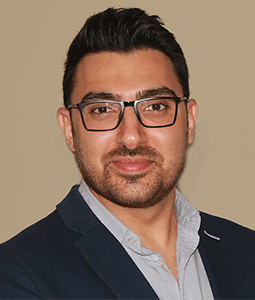
We are proud to announce that Dr. Ramtin Zand has received an NSF CAREER award for his research on "Heterogeneous Neuromorphic and Edge Computing Systems for Realtime Machine Learning Technologies".
This project aims to harness the combined capabilities of neuromorphic and edge computing to forge a heterogeneous machine learning system. Its primary goal is to enable computer vision and language models on resource- and energy-constrained devices at an unprecedented scale. It focuses on several key aspects: (1) developing hybrid models that merge the energy efficiency, temporal sparsity, and spatiotemporal processing of spiking neural networks with the global processing of transformer models for complex large-scale computer vision tasks, (2) creating a methodology to deploy large language models on edge devices by employing system-level innovations such as computational graph modifications, custom kernels, and mathematical refactoring, (3) designing a flexible edge artificial intelligence (AI) accelerator to overcome hardware limitations hindering real-time implementation of large transformer models at the edge, (4) seamlessly integrating a heterogeneous system of mobile processors, edge AI accelerators, and neuromorphic hardware for a comprehensive end-to-end solution. Throughout the project, rigorous investigation delves into critical trade-offs between bandwidth, accuracy, performance, and energy consumption.
AAAI Best Demo Award
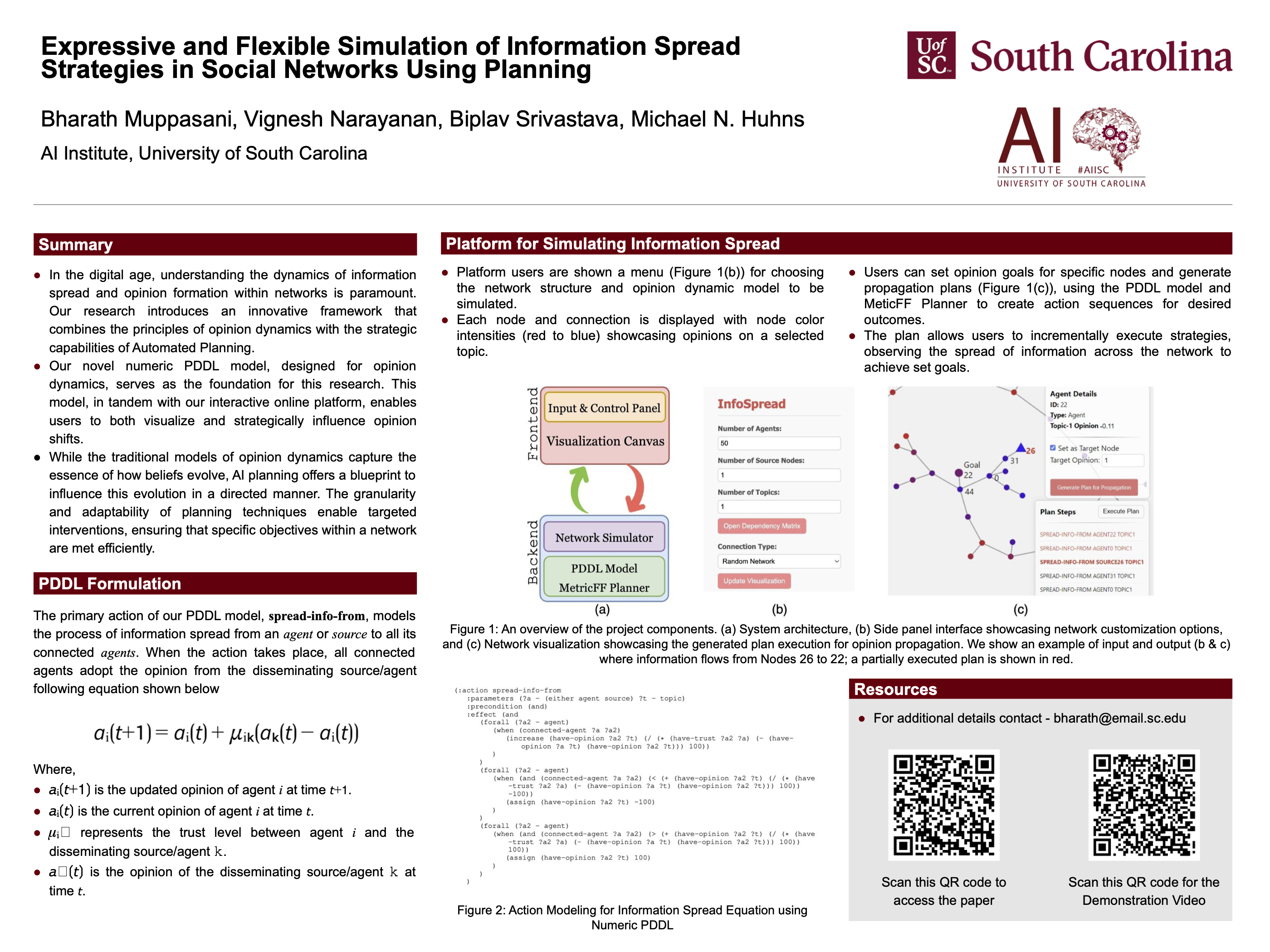 The paper titled "Expressive and Flexible Simulation of Information Spread Strategies in Social Networks Using Planning," by Bharath Muppasani, Vignesh Narayanan, Biplav Srivastava, Michael N. Huhns, has been selected for the Best Demo Award at AAAI-24. AAAI is a top AI conference and was held over the past week.
The paper titled "Expressive and Flexible Simulation of Information Spread Strategies in Social Networks Using Planning," by Bharath Muppasani, Vignesh Narayanan, Biplav Srivastava, Michael N. Huhns, has been selected for the Best Demo Award at AAAI-24. AAAI is a top AI conference and was held over the past week.
The work enables detailed simulations of opinion evolution and strategic interventions using planning. Designed to enhance human-AI collaboration, the framework supports the creation of strategies that facilitate a deeper understanding and informed engagement with the opinion evolution in networks. It was selected from 30 demos, which themselves were selected from a pool of 97 submissions. You can read the poster and watch the video presentation.
Recent Publications: Natural Language Processiong
The following papers written by our AI Institute members were accepted for presentation at the 2023 Conference on Empirical Methods in Natural Language Processing:
- Counter Turing Test (CT^2): AI-Generated Text Detection is Not as Easy as You May Think - Introducing AI Detectability Index (ADI). Megha Chakraborty, S.M Towhidul Islam Tonmoy, S M Mehedi Zaman, Shreya Gautam, Tanay Kumar, Krish Sharma, Niyar R Barman, Chandan Gupta, Vinija Jain, Aman Chadha, Amit P. Sheth, Amitava Das.
- The Troubling Emergence of Hallucination in Large Language Models - An Extensive Definition, Quantification, and Prescriptive Remediations. Vipula Rawte, Swagata Chakroborty, Agnibh Pathak, Anubhav Sarkar, S.M Towhidul Islam Tonmoy, Aman Chadha, Amit P. Sheth, Amitava Das.
- FACTIFY3M: A benchmark for multimodal fact verification with explainability through 5W Question-Answering. Megha Chakraborty, Khushbu Pahwa, Anku Rani, Shreyas Chatterjee, Dwip Dalal, Harshit Dave, Ritvik G, Preethi Gurumurthy, Adarsh Ashok Mahor, Samahriti Mukherjee, Aditya Pakala, Ishan Paul, Janvita Reddy, Arghya Sarkar, Kinjal Sensharma, Aman Chadha, Amit P. Sheth, Amitava Das.
The acceptance of these papers at EMNLP, a leading conference in NLP, is a testament to the high quality of research being conducted at the AI Institute. The papers address important and challenging problems in NLP, and their findings have the potential to significantly advance the state of the art in this field.
USC awarded NSF MRI grant to acquire HPC cluster for AI-for-science research and education in South Carolina
The University of South Carolina was just awarded $1.1M with a National Science Foundation MRI grant to purchase a High-Performance Computing cluster (HPC) for boosting AI enabled science, engineering, and education in South Carolina. This grant will be led by the PI Prof. Ming Hu (Mechanical engineering), two Computer Science Co-PIs (Prof. Jianjun Hu and Prof. Forest Agostinelli) and additional two Co-PIs (Prof. Sophya Garashchuk of chemistry, and Sagona, Paul of Div. IT).
The new HPC instrument (with both new GPU and CPU servers) will be hosted at USC but will be made accessible to students of more than 10 regional universities such as Claflin University, Furman University, Francis Marion University, Costal Carolina University, College of Charleston, Charleston Southern University, Winthrop University, Presbyterian College, Benedict College, USC Beaufort and etc. It will promote research in diverse fields such as materials science, physics, chemistry, engineering, computer science, bioinformatics, health science and humanities, all enhanced by the HPC, big data and AI tools. The project team will also organize training workshops for AI-enabled scientific research and engineering innovation, education programs for undergraduate students, and summer camps for high school students in the coming years. More information will be posted on the project website at http://ai4science.sc.edu.
Dr. Hu Receives NSF Grant for Machine Learning in Materials Discovery
Prof. Jianjun Hu, director of the Machine Learning and Evolution Lab and his collaborators Prof Ming Hu (PI) from USC Mechanical engineering and Prof. Christopher Wolverton (Co-PI) of Northwestern University have just acquired a NSF grant on generating a modern phonon database and developing machine learning prediction, analysis, and visualization tools for data driven materials discovery, which will speed up research and design of novel thermoelectrics, superconductors, photovoltaics, superionic conductors.
Phonon Database Generation, Analysis, and Visualization for Data Driven Materials Discovery
Material databases and their related computing infrastructures have become the major cornerstone of current data driven and artificial intelligence (AI) based materials discovery. However, among the rich material properties of interest to the materials community, few databases have comprehensively included phonon properties, which are at the center of materials science and are related to diverse functionalities such as thermoelectrics, superconductors, photovoltaics, superionic conductors, etc. This project meets these urgent needs to generate a comprehensive phonon database along with analysis, visualization, navigation, and visualization tools, combined with multi-channel infrastructure-community communication and feedback. The phonon database will become an excellent complement to the currently widely used material databases. Developing such an infrastructure will be beneficial for all areas of materials science and engineering, accelerating the prediction, design, and synthesis of novel materials with various emerging applications in modern science and technology. The project will promote the engagement of underrepresented and minority students in research, equip engineering students with interdisciplinary expertise and frontier knowledge crucial to their future careers, and fulfill the mission to prepare a high-quality workforce for science, technology, and engineering. The project will also develop new course materials for undergraduate and graduate computational materials science courses.
CSE Faculty and Student Research Awards
We congratulate our faculty members that have received research awards. They are:
- Dr. Christian O'Reilly for receiving funds from NIH-NIMH on the project titled "The Role of Autonomic Regulation of Attention in the Emergence of ASD"
- Dr. Jason Bakos for receiving funds from NSF on the project titled "Collaborative Research: SHF: Small: Sub-millisecond Topological Feature Extractor for High-Rate Machine Learning"
- Dr. Homayoun Valafar for receiving funds from Prisma Health-Upstate on the project titled "Analysis of Patient Glycomic Profiles in Search for Breast Cancer Signatures Using Machine Learning Approach"
- Dr. Jianjun Hu for receiving funds from EPSCoR/IDeA/SC Commission on the project titled "GEAR CRP: Deep learning reinforced high-resolution semiconductor radiation detector for real- time medical imaging"
- Dr. Micheal Huhns for receiving funds from University of Maryland/ARLIS/DOD on the project titled "Information Competition Simulator"
- Mr. Lexington Wahlen for receiving a NASA South Carolina Space Grant Consortium STEM Outreach Award for the project titled "Wordification: A New Way of Teaching English Spelling Patterns"
- Mr. Musa Azeem for receiving a NASA South Carolina Space Grant Consortium STEM Outreach Award for the project titled "Unobtrusive and User-Friendly Acquisition of Multi-sensor Data from Wearable Smartwatch Technology"
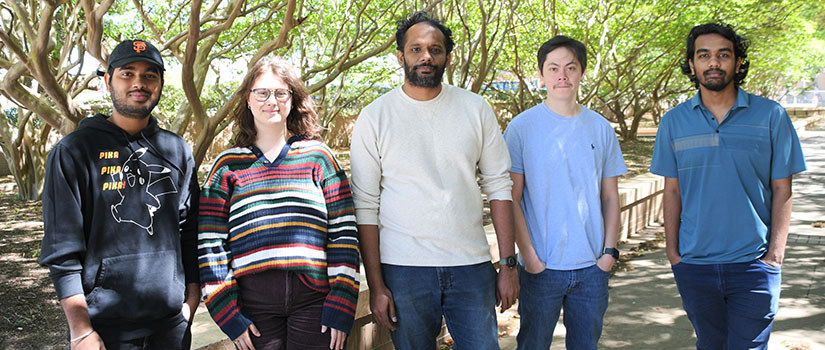 Since 2021, Assistant Professor
Since 2021, Assistant Professor 